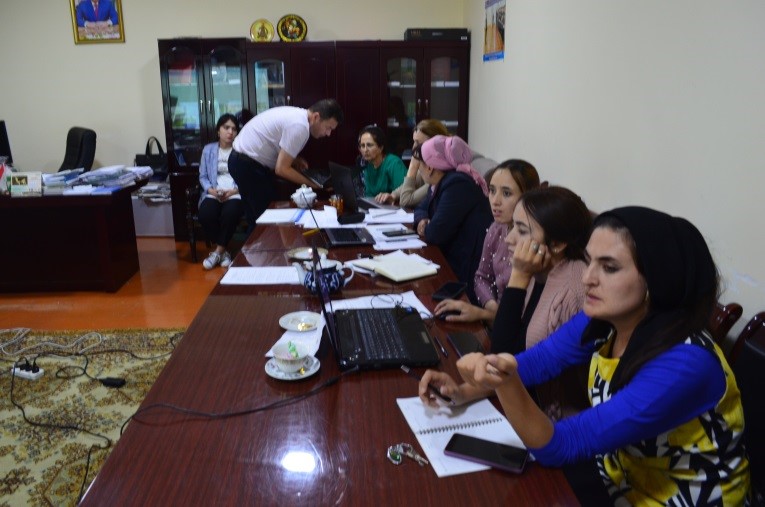One of the scientific activities of the Institute of Botany, Physiology and Genetics of Plants of the National Academy of Sciences of Tajikistan is the study of the biological diversity of plants, the phytochemical characteristics of medicinal plants and the determination of their resources in nature.
The specialists of the Institute, along with other research institutions of the world, such as Ukraine, Belarus, Armenia and Uzbekistan, participate in the implementation of the international project “Biodata” for the presentation of data related to biological diversity at the international level. This program is being implemented within the framework of cooperation between the Institute and the NGO “Zan va Zamin”. It should be noted that the Institute is considered to be a very active executor among other project partners in the implementation of this project.
The main goal of the project is to improve the skills of young biologists in the development and processing of data related to biological diversity, the exchange of experience, their analysis and management, as well as to promote the publication of data on biological diversity at the international level. .
Within the framework of cooperation between the Institute and “Zan va Zamin”, a group of young botanists organized a joint expedition to the Varzob and Aini regions to collect ethnobotanical knowledge.



The purpose of the expedition and research was to prevent the disappearance of traditional knowledge about flora as an intangible cultural heritage by collecting and documenting local knowledge, analyzing the use of collections and identifying traditional types of medicinal plants in the communities of Varzob and Aini districts. .
It should be noted that the process of organizing the expedition and the methodology of ethnobotanical research were carried out regularly with the advice and consultations of ethnobotanist Professor Abdulbasit Qurbani from Uppsala University, Sweden.
At present, the information of the joint expedition is collected, entered and processed in special tables. In order to comprehensively analyze the obtained ethnobotanical data and summarize them, write an article about it and publish it, young researchers experience difficulties and need advice and help from specialists.
In May of this year, during the visit of Abdulbasit Qurbani to the Institute to meet with the participants of the ethnobotanical expedition, he was asked to help young researchers in the preparation of the article and its publication.
Currently, the Biodata project has an opportunity to support young botanical researchers in the preparation of ethnobotanical articles for a training seminar.
Therefore, from 10/31/2022 to 11/04/2022 at the Institute of Botany, Physiology and Genetics of Plants of the National Academy of Science, a training seminar was held for researchers – young botanists on the topic “Analysis of the results of ethnobotanical research and the rules for writing manuscripts of scientific articles”. according to the results”. It was attended by members of the ethnobotanical expedition, young botanists, masters, young teachers from the National University of Tajikistan, the State Pedagogical University of Tajikistan named after S. Aini and other interested employees of the Institute of Botany, Physiology and Plant Genetics of the National Academy of Science.
Abdulbasit Qurbani, Professor at the Department of Systematic Botany at the University of Uppsala, Sweden, was invited to conduct the training workshop as a trainer.
The purpose of the training seminar: to analyze the results of ethnobotanical research with the participation of a foreign expert; to improve the knowledge and skills of young botanists in the preparation of scientific articles in the field of ethnobotany and support their publication in prestigious domestic and foreign scientific journals; assistance in raising funds for ethnobotanical research through the development of projects.
On the last day of the training workshop, each participant prepared an ethnobotanical article, presented it in the form of a presentation, and the rest of the participants discussed it.